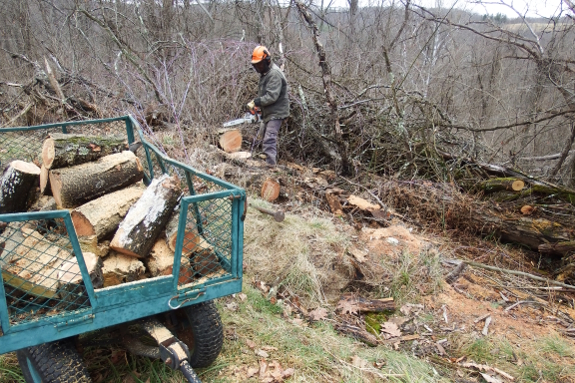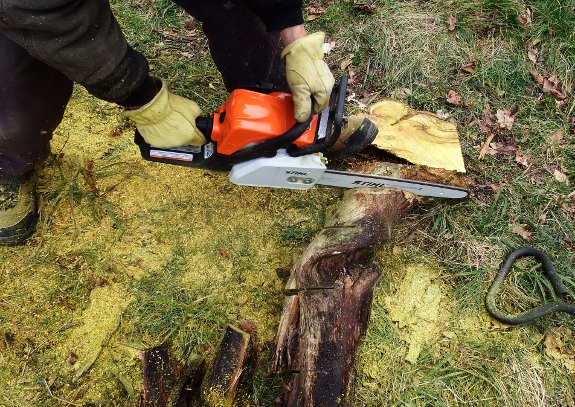
archives for 02/2020

Every location has a few easy tree species to harvest for firewood.
Here on the ridge, we have a massive pile of lumber that was pushed
aside during the construction of our septic system. And just about all
of it is either honey locust or osage orange. The question became ---
are either or both good for firewood?
Short version: both burn hot and well. Of course, it's more complicated
than that.
Honey locust turns out to be a pretty optimal firewood (as long as
you're careful not to jab yourself with the thorns). At 26.7 million
BTUs per cord, it burns nearly as hot as black locust (27.9) and is
much easier to split. I'm so glad to have such an excellent
keep-the-fire-going wood close at hand!
Only downside? Honey locust is not
a kindling wood. If this was our only wood, we'd have a bear of a time
getting a fire started.

Unlike honey locust, osage orange is impossible to confuse with
anything else. As soon as we cut into our first log, we were wowed by
the yellow sawdust. Then we brought some to the chopping block and
started swearing --- despite what the internet says, our osage orange
was pretty difficult to split. Luckily, most of the logs were small
enough they could go into the fire whole.
Inside, I soon found that osage orange is great for starting fires.
Even though the logs feel heavy (and do burn extremely hot, clocking in
at 32.9 BTU), they have a chemistry that makes them spark heavily. I
suspect that same chemistry makes kindling light fast.
One warning: do not leave an osage-orange fire unattended unless you
completely close the stove air vent because the sparks travel far and
wide. On the other hand, the same feature can be very entertaining if
you're sitting in front of the stove with a cat and a book listening to
the snap, crackle, pop.
Overall, I'd say we got very lucky with our first round of firewood
species here on the ridge. High BTUs mean much less work per unit heat.
I'd say we've put about half as much effort into our fire this winter
compared to what we used to do when burning tulip poplar, box elder,
and black walnut down by the creek.
Want more in-depth information? Browse through our books.
Or explore more posts by date or by subject.
About us: Anna Hess and Mark Hamilton spent over a decade living self-sufficiently in the mountains of Virginia before moving north to start over from scratch in the foothills of Ohio. They've experimented with permaculture, no-till gardening, trailersteading, home-based microbusinesses and much more, writing about their adventures in both blogs and books.
